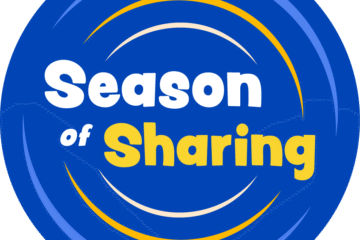Sometimes the good old things (the research from several years ago in the late 80s) remain most relevant in today’s 2025, world of healing.
In 1987 I was the principal author of a most interesting study on the B-Endorphin which was published in the International Journal of Clinical Biofeedback and Health. For anyone who may be interested in reading the entire study (it’s really very interesting for sure, though I’m biased) it is in volume 10, No1, pp.8-15 in this International Journal of
Clinical Biofeedback and Health.
At the time of this early research, I was in the midst of completing my PhD in Clinical Psychology and simultaneously I was enthralled by the newly discovered power of the “runners high”, which rather quickly became recognized as the unusual event which often takes place when a disciplined athlete pushes him/herself beyond what is normal, and often excel to a level they never expected!
As a youngster growing up in the inner city of Chicago, I was petrified to enter a swimming pool because of a near drowning experience. My longtime friend Mike very much wanted to help me overcome my fear of swimming, especially before I entered high school. With my friend’s persistent help, I was able to learn to swim, so when I entered high school, I surprised myself by immediately joining the swim team. At that particular time, I was so enthusiastic about my accomplishment with swimming that I volunteered to swim in the very competitive breaststroke hundred-meter race and when I excitedly climbed out of the old sandstone pool, I tore off three or four of my fingernails, but I felt no discomfort, only excitement because I placed in the race!
This was my first experience with understanding the power of the Endorphin which is present in all human beings. The Endorphin is a protein made up of 31 amino acids and is produced in the pituitary gland of our brain which is the size of our baby fingernail. The endorphin was discovered by Dr. Hughes in 1975, and it literally means “from inside the head”. The Endorphins are an opiate-like substance which can alter our moods and behaviors by producing a morphine like substance which can be 5000 to 10,000 times more potent pure morphine! And most amazingly it is formed within our body and research suggests that the use of other drugs, especially morphine like drugs may very well stop the production of our own Endorphin and its medicinal abilities.
During that time in high school, I was becoming immersed in the Greek culture as I was studying the Greek language with my professor who was from Greece. I was very fascinated by the Greek culture and the new understanding of Greek medicine and healing. The Greeks believed that there were three very different healers in their culture: there was the “knife” doctor, and then the “herb” doctor, and the “Word” doctor. There is no doubt in my mind they all were critically important, but I was most fascinated by the “Word” doctor, especially because I had recently read “Anatomy of an Illness” the New York Times most popular book written by the author of The Saturday Review, Norman Cousins.
Norman Cousins was experiencing intense suffering from a terminal illness which medicine provided no relief from his pain. Ironically, he found healing through the “words and behavior” of funny people, such as Laurel and Hardy, Charlie Chapman, and W.C. Fields. For some time now we had discovered that the Endorphin significantly increases through the new knowledge obtained by neuroscience, we have discovered that the endorphins significantly increase with humor, exercise, and being around positive people and experiences.
The Endorphin travels at an incredible speed within our brain and throughout our entire body, and the complex interactions within our brain. This unusual Endorphin energy present in each of us is composed of 100,000,000,000+ neurons which have thousands of connections with other neurons. This computes to a minimum of 100 trillion interconnections, or 2,100,000,000,000,000 possible transactions that the human brain can begin at one time! The human brain is a dense thicket of hundreds of billions of nerve cells, each capable of forming anywhere from 1000 to 500,000 synapse, at any time. It is important to remind ourselves that we have been created by an amazing God who has placed within each of us roughly 10,000 miles of interconnecting nerve tissue in each cube inch of our neocortex. This is enough connections to stretch practically from Los Angeles to Cape Town and back 28 times; enough to stretch from here to the moon and back again and then back to the moon again!
We recognize the brain transmits information electronically and chemically and as well as jointly utilizing both systems. As advanced as we are in so many ways, we have very limited knowledge of our brain. However, the more we are committed to learn about our brain, the reward will be significant increase in knowledge, and this will exponentially grow because of the marvelous reality of what our brain really is with its infinite learning available for those who aspire in this quest.
In the article which we wrote in 1987, I reference very unusual book written by my esteemed Professor, Dr. William Glaser. This book is entitled Positive Addiction and suggests everyone is prone to addiction and probably we all are an addict in one way or another. At first this was rather disturbing to me, however as I processed it, I realize that perhaps there are a few “positive addictions” such as learning, growing, creating, etc. which provide unusual opportunities moving forward rather than remaining stuck in negative addiction. Limited thinking, self-centeredness, and poor decision making which results in painful outcomes, can change. We can CHOOSE to recover!
Please look forward to part two which focuses on the importance of wisely utilizing our Endorphins to promote good health and healing. The second part on the Endorphin will be in next month’s Publication
To speak with Dr. Tim Lynch, PhD., you can call him at 615-504-4357, or email him at tdlynch@bellsouth.net If you want to know more about Dr. Tim check out Psychology Today Practice Directory, or his website: www.thelynchgroup.net













